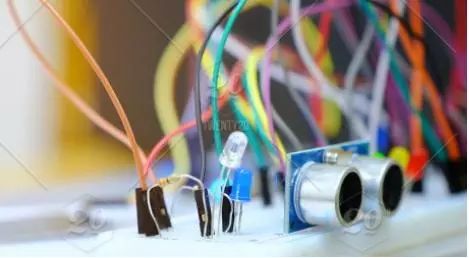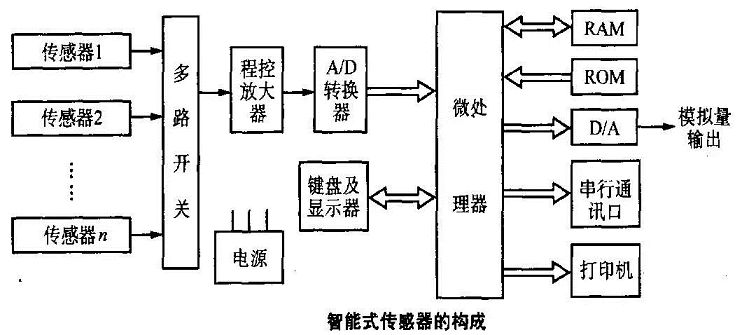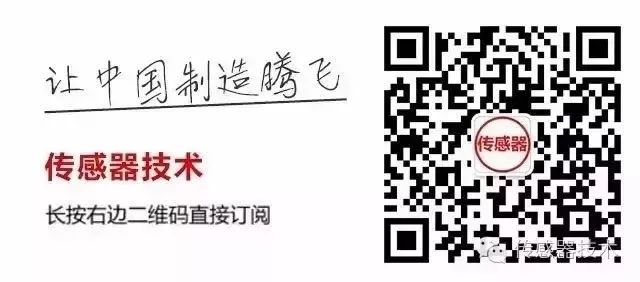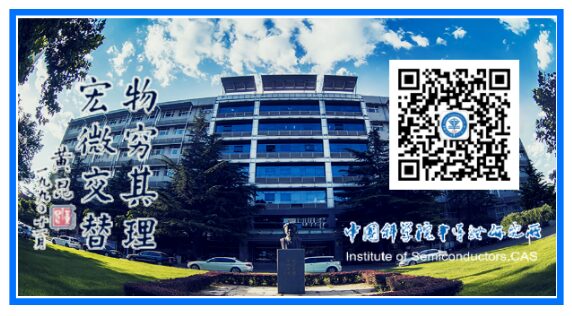
Source: Sensor Technology
Author: Mao Fuli
With the development of automation and intelligence in measurement and control systems, traditional sensors can no longer meet certain data processing capabilities and functions such as self-checking, self-calibrating, and self-compensating. The research and application of smart sensors and multifunctional sensors have already entered the market.
Structure and Characteristics of Smart Sensors

Sensors, like the five senses of a person, are important tools for information acquisition. They play a huge role in industrial production, national defense construction, and scientific and technological fields. However, compared to the rapidly developing computer, sensors as the “five senses” lag far behind the development speed of computers as the “brain”.
With the development of automation and intelligence in measurement and control systems, sensors are required to have high accuracy, reliability, stability, and certain data processing capabilities, as well as the ability to self-check, self-calibrate, and self-compensate. Traditional sensors can no longer meet these requirements.
Moreover, to manufacture high-performance sensors, merely improving material processes is very difficult; it is necessary to combine computer technology with sensor technology to compensate for performance deficiencies. Computer technology has brought about tremendous changes in sensor technology. The combination of microprocessors (or microcomputers) with sensors has resulted in powerful smart sensors. They are referred to as Intelligent Sensors or Smart Sensors abroad. Additionally, traditional sensors generally can only measure one parameter, while some situations require small multifunctional sensors that can measure multiple parameters simultaneously. Scientists from multiple countries have already recognized the importance of this direction and have developed some multifunctional sensors.
1. Smart Sensors
Smart sensors are a hot topic of research in the international scientific community, and there is no unified and exact definition yet. This article does not discuss the differences between the terms (Intelligent Sensor or Smart Sensor) and collectively refers to them as smart sensors.
Currently, scholars both domestically and internationally generally believe that smart sensors are composed of traditional sensors and microprocessors (or microcomputers). They fully utilize the computing and storage capabilities of computers to process sensor data and can adjust their internal behavior to optimize the collected data. The functions of smart sensors are as follows:
(1) Self-compensation capability:
Automatically compensates for sensor nonlinearity, temperature drift, time drift, response time, etc., through software.
(2) Self-calibration function:
After the operator inputs a zero value or a certain standard value, the self-calibration software can automatically perform online calibration of the sensor.
(3) Self-diagnosis function:
After power is turned on, the sensor can perform self-checks to check whether each part of the sensor is normal and can diagnose faulty components.
(4) Data processing function:
Can automatically process data according to the internal program of the smart sensor, such as performing statistical processing and eliminating outliers.
(5) Bidirectional communication function:
A closed loop is formed between the microprocessor and the basic sensor. The microprocessor not only receives and processes sensor data but also feeds back information to the sensor to adjust and control the measurement process.
(6) Information storage and memory function.
(7) Digital output function:
Outputs digital signals, which can be easily connected to computers or interface buses.
Currently developed smart sensors only possess some of the above functions. Traditional sensors can only serve as sensitive elements to detect changes in physical quantities, while smart sensors include measurement signal conditioning (such as filtering, amplification, A/D conversion, etc.), data processing, and data display, encompassing almost all functions of instruments and meters. It is evident that the functions of smart sensors have extended into the realm of instrumentation.
Early smart sensors processed and converted the output signals of sensors before sending them to microprocessors for computational processing. In the 1980s, smart sensors primarily centered around microprocessors, integrating sensor signal conditioning circuits, microcomputer memories, and interface circuits onto a single chip, giving sensors a certain degree of artificial intelligence. In the 1990s, intelligent measurement technology saw further improvements, allowing sensors to achieve miniaturization, integrated structures, array types, and digital forms, making them user-friendly, easy to operate, and equipped with self-diagnosis, memory, information processing, data storage, multifunction measurement, networking communication, logical reasoning, and judgment capabilities.
With the advancement of science and technology, the functions of smart sensors will gradually enhance. They will utilize artificial neural networks, artificial intelligence, and information processing technologies (such as sensor information fusion technology, fuzzy theory, etc.) to endow sensors with higher intelligence, enabling them to analyze, judge, adapt, and learn autonomously, and to accomplish complex tasks such as image recognition, feature detection, and multidimensional detection.
Smart sensors can generally be divided into three types: sensors with judgment capabilities, sensors with learning capabilities, and sensors with creative capabilities.
2. Structure of Smart Sensors

Smart sensors mainly consist of sensors, microprocessors (or microcomputers), and related circuits.
Sensors convert the physical quantities to be measured into corresponding electrical signals, which are sent to the signal conditioning circuit for filtering, amplification, and analog-to-digital conversion before being sent to the microcomputer. The computer is the core of the smart sensor; it can not only compute, store, and process the measurement data from the sensor but also adjust the sensor through feedback loops. By fully utilizing various software functions, the computer can accomplish tasks that hardware finds difficult, greatly reducing the difficulty of sensor manufacturing, improving sensor performance, and lowering costs.

The structure of smart sensors can be integrated or separated. Based on structure, they can be categorized into integrated, hybrid, and modular forms. Integrated smart sensors combine one or more sensitive devices with microprocessors and signal processing circuits on the same silicon chip, achieving high integration and small size. This type of integrated sensor is still challenging to realize at the current level of technology. A hybrid smart sensor is formed when the sensor, microprocessor, and signal processing circuit are placed on different chips.
This type of structure is more common. Basic smart sensors can also consist of many independent modules, such as assembling the microcomputer, signal conditioning circuit module, output circuit module, display circuit module, and sensor within the same casing, which results in high integration but larger size. Nevertheless, at the current technological level, it remains a practical structural form.
Smart Sensors Have a Wide Range of Applications
1) Application in Smart Agriculture
Due to the special nature of the environment, most agricultural projects are conducted in the fields, making calibration operations very inconvenient and manual costs very high. Therefore, the demand for the stability of sensor data is very high, and smart sensors are the most effective type of sensor.
2) Application in Industrial Automation
In modern industrial production, especially in automated production processes, various sensors are used to monitor and control various parameters in the production process, ensuring that equipment operates in a normal or optimal state and that products achieve the best quality. It can be said that without excellent smart sensors, industrial automation cannot be discussed.
3) Application in Robotics
Today’s robots possess limb and sensory functions similar to humans, have a certain degree of intelligence, and can operate flexibly without relying on human control. All of this is made possible by sensors, which are crucial for robots to perceive the outside world.
4) Application in Smart Healthcare
With the development of smart sensors, medical smart sensors serve as the “five senses” for capturing vital signs information, and their role is becoming increasingly significant, finding wide applications. For example, in image processing, clinical chemistry testing, monitoring vital signs parameters, and diagnosing and treating respiratory, neurological, and cardiovascular diseases, the role of smart sensors is irreplaceable. In the future, they will be ubiquitous in modern medical instruments and equipment.
5) Application in Smart Home Appliances
Smart homes are a major trend for the future, and smart home appliances will be essential products for many households. In the future, smart sensors will be applied in many home appliances, such as televisions, fans, air conditioners, washing machines, drying machines, refrigerators, wardrobes, etc. They are the basic components for achieving communication between people and home appliances and are the foundation for building a smart home internet of things.
Shortcomings in the Development of China’s Smart Sensor Industry
1. Key Technologies Have Not Yet Been Overcome
The design technology of sensors encompasses various disciplines, theories, materials, and process knowledge, making breakthroughs extremely challenging. Currently, under conditions of talent shortages, high R&D costs, and fierce competition among enterprises, China has yet to overcome some common key technologies in sensors.
2. Insufficient Industrialization Capability
Due to the technological lag of Chinese enterprises, the development norms of the industry have not yet formed, leading to a lack of compatibility and series production of domestic sensor products, frequent occurrences of repetitive production and vicious competition, resulting in poor product reliability and severe low-end deviation. The degree of industrialization is not proportional to the variety and series, forcing reliance on foreign imports for a long time.
3. Resource Dispersal
Currently, there are over 1,600 sensor enterprises in China, but most are small and micro enterprises with weak profitability and a lack of leading enterprises with technological guidance. This ultimately leads to a dispersed state in terms of funding, technology, enterprise layout, industrial structure, and market, preventing effective concentration of resources and hindering the maturity of industrial development.
4. Shortage of High-End Talent
As the sensor industry is in its infancy, with weak funding, technology, and industrial foundations, combined with the involvement of multiple disciplines and the broad knowledge requirements, along with the constant emergence of new technologies, it is difficult to attract high-end talent. Additionally, the imperfect and unreasonable talent cultivation mechanism in China has also led to a talent shortage issue in the industry.
Development Trends of Smart Sensor Technology
1. Toward High Precision
With the increase in automation production levels, the requirements for sensors are continuously rising. It is necessary to develop new types of sensors with high sensitivity, high precision, fast response speed, and good interchangeability to ensure the reliability of automated production.
2. Toward High Reliability and Wide Temperature Range
The reliability of sensors directly affects the anti-interference performance of electronic devices, and developing high-reliability sensors with a wide temperature range will be a permanent direction. The development of emerging materials (such as ceramics) for sensors will be very promising.
3. Toward Miniaturization
As the functions of various control instruments and devices become stronger, the requirement for smaller components becomes more pronounced, necessitating smaller sensor sizes. This calls for the development of new materials and processing technologies. Currently, sensors made from silicon materials have already achieved very small sizes. For example, traditional accelerometers are made from heavy blocks and springs, which are large, unstable, and have short lifespans, while silicon accelerometers made using various micro-fabrication techniques are very small and have reliable interchangeability.
4. Toward Low Power Consumption and Passive Development
Sensors generally convert non-electric quantities into electric quantities and require a power supply during operation. In field environments or places far from the power grid, they are often powered by batteries or solar energy. Developing low-power sensors and passive sensors is an inevitable development direction, which can save energy and improve system lifespan. Currently, the development of low-power chips is progressing rapidly; for example, the T12702 operational amplifier has a static power consumption of only 1.5 µA and requires a working voltage of only 2-5V.
5. Toward Intelligent and Digital Development
With modernization, the functions of sensors have surpassed traditional capabilities. Their outputs are no longer limited to single analog signals (such as 0-10mV) but are instead processed digital signals from microcomputers, some even with control functions, which are referred to as digital sensors.
6. Toward Networking Development
Networking is an important direction for sensor development, and the role and advantages of networks are gradually becoming evident. Networked sensors will undoubtedly promote the development of electronic technology.
Smart sensors are one of the most important technologies in the development of the Internet of Things. While injecting fresh blood into traditional industries, they also lead the trend of the sensor industry, playing a core role in fields such as medicine, industry, oceanography, aerospace, military, and agriculture. With the development of smart sensor technology, the next generation of smart sensors will continuously improve their functions by integrating technologies such as artificial neural networks and artificial intelligence, showing considerable development prospects.

Editor: Southern Cat
